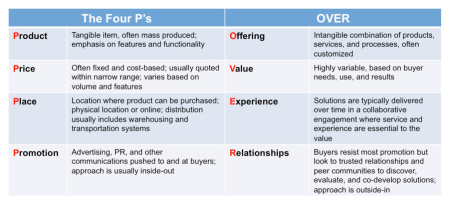With the end of a quarter upon us, functional departments are pulling together performance results to present to their CEO and CFO. For marketing, it has long been a struggle to show how marketing programs have resulted in growth of revenues and profits. When asked how a specific marketing program, activity or campaign affected sales, marketers are quickly put on the defensive. Add to that, many marketers don’t see their role as revenue generating. Marketing programs may not be tied directly to an organization’s objectives and goals and therefore their impact on sales and profits is not measurable. As a result, leadership views marketing as a cost center. Eventually, this thinking can lead to cuts in marketing’s budget and in personnel when the company needs to make improvements to its bottom line.

How to Be a Great Marketer in the Eyes of the CEO and CFO
It isn’t enough to show charts and graphs of how many more visitors viewed a website in a month, or downloaded a new white paper or dropped their card in a bowl at a trade show. A better way to measure marketing performance is to measure its impact on buying behavior during the sales cycle. When measuring performance, marketing must determine whether their activities resulted in moving a prospective customer closer to becoming a buying customer.
B2B sales cycles are typically more complex than B2C cycles. More decision makers are involved in the buying process and from initial contact to actual purchase the cycle itself is longer. Different marketing programs touch customers at various stages during the sales cycle, making it difficult and even inaccurate to credit a single marketing activity as being responsible for the buyer’s decision to purchase. For this reason, marketing needs to look at its programs, activities and campaigns holistically and measure the impact each has on moving the prospect into the next stage of the sales cycle.
Where Do You Start?
Begin by understanding your company’s sales cycle and gain a clear understanding of what your prospective buyer needs at each stage. Look at your current marketing programs and activities. These should map to the prospective buyers’ needs at each of the stages in the sales cycle. If they don’t, consider whether these activities are contributing to your organization’s objectives. If not, drop them from your marketing plan. You may need to consider new activities that better align with your company’s objectives, sales cycle and prospective buyers’ needs.
Next, assign values to each program based on the importance of the desired outcome along the sales cycle. Certain activities are tied to more critical outcomes and therefore should be given a higher value. You now have metrics to measure and can evaluate how effective a marketing program or activity was at eliciting the desired outcome in the sales cycle and if they contributed to generating additional sales.
Is the Marketing Program Profitable?
Once you have measured and quantified how these activities contributed to generating revenues you must determine if they did so profitably. Calculate the ROI. Start with a simple P/L statement.
- On the Revenue side, include the dollar contributions that the program made to sales and multiply this number by your average gross margin to calculate the gross profit from marketing’s contributions to sales.
- On the expense side, total all marketing program expenses and include staff time and any other resources that contributed directly to the program.
- Subtract the total program expenses from the gross profit to determine the ROI of the program.
For more details, download the ebook, Definitive Guide to Marketing Metrics and Analytics, by Marketo which provides excellent real business examples for calculating Marketing ROI.
Be a Revenue and Profit Generator
With the start of a new quarter, now is a good time to review your marketing programs and goals. Consider if these line up with your organization’s overall objectives. Determine if you have the right metrics in place to measure effectiveness and impact during the sales cycle. Choose the tools to measure results. Decide how often to measure and adjust your activities.
When marketers develop programs that align with prospective buyers’ needs during the sales cycle, measure program effectiveness (incremental sales contribution) and calculate program profitability (ROI), it demonstrates to leadership that marketing is a contributor to the growth of the organization and not just another cost center.
Resources:
Definitive Guide to Marketing Metrics and Analytics, Marketo (ebook)
Digital Body Language, Chapter 9, Can you Finally Measure Marketing Effectiveness? by Steven Woods, eloqua ebook
Tags: Linkedin, marketing, Marketing Communications, Marketing Effectiveness, Marketing Metrics and Measurement, Marketing plan, Marketing Programs, Marketing ROI, marketing tools, Susan Lowe













